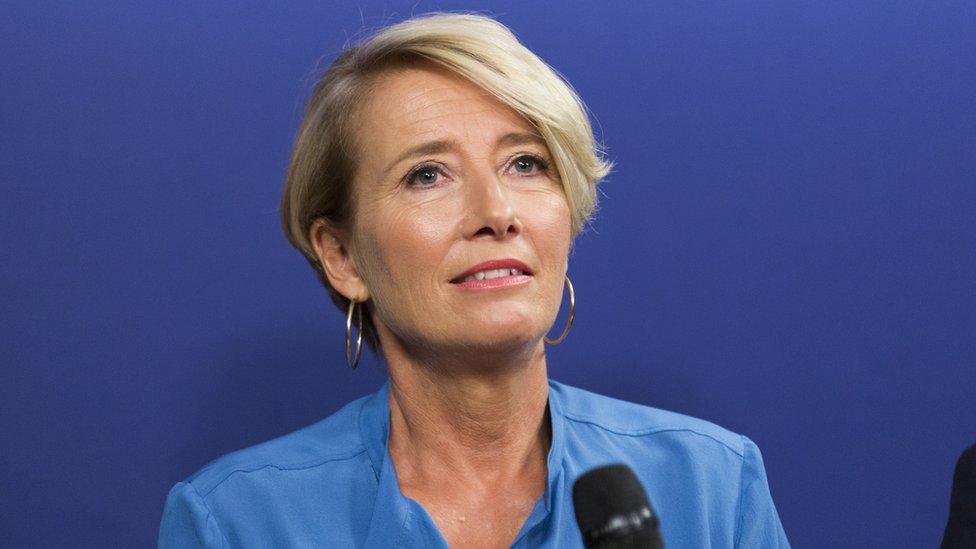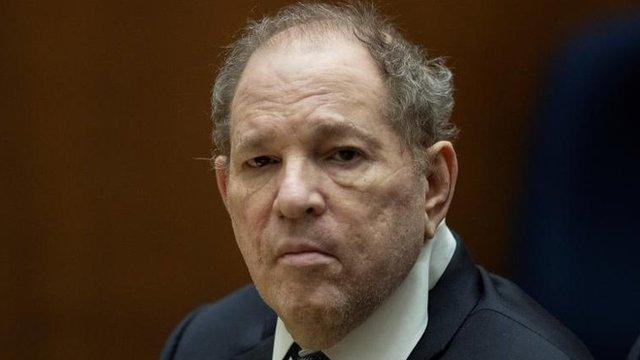Reality Check: How many women in top UK film jobs?
- Published

Allegations of sexual offences against Harvey Weinstein, the award-winning American film producer, have ignited a discussion about who has power in the film industry. Weinstein denies any sexual assaults.
In an interview with the BBC's Today programme, Daisy Lewis, an actress and director, said she hoped the Weinstein scandal would prompt a shift in the industry so that more women reached senior roles "writing and directing and creating work and employing other women so that this situation doesn't really happen".
Ms Lewis's remarks prompted Reality Check to dig into the numbers behind film's most sought-after jobs.

The actress Emma Thompson told the BBC that "what we need to start talking about is the crisis in masculinity".
The British film industry, which last year employed about 25,000 people as cast and crew, is one dominated by men, based on research by the British Film Institute (BFI).
In 2016 fewer than one-third of producer credits in British films went to women and even fewer credits went to writers (17%) and directors (13%).
Under 10% of stunt co-ordinators, music composers, sound recordists and directors of photography were female.
In only two key roles - casting director and costume designer - were more women employed than men.
The proportion of women has increased over the years, with the percentage of crew members rising from 3% in 1913 to 34% in 2017. But for decades the most influential posts have overwhelmingly gone to men. It wasn't until 2010 that a woman, Kathryn Bigelow, won the Bafta for best direction.

Dr Vicky Ball, a lecturer in cinema and television history at De Montfort University in Leicester, said that historically some jobs, such as technical work in the film industry, went to men and some, such as costume design, went to women.
"It's always good to have a diversity of voices, otherwise whose values are being represented?"
Directors UK, which commissioned its own study on the film industry in 2016, external, found that women were struggling to climb the ladder. It found a perception in the film industry that women were less likely to hold senior jobs than their male counterparts unless they worked in an area, such as make-up, which had traditionally been seen as a role undertaken mainly by women.
Daisy Lewis also told the BBC that fewer parts for women on-screen made them vulnerable because speaking up "means they don't get employed". For all the decorated and adored British actresses, from Judi Dench to Kate Winslet, the industry as a whole shows that the proportion of women cast in films in 2017 is the same as it was in 1911 (roughly one-third), according to the BFI data.
Of the top-grossing films in the US in 2015, male characters appeared on screen twice as much as female characters and also spoke twice as often, based on research by the Geena Davis Institute on Gender in Media.



- Published11 October 2017

- Published24 February 2023
